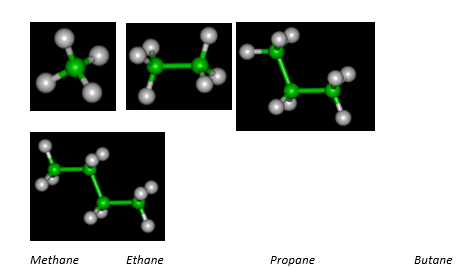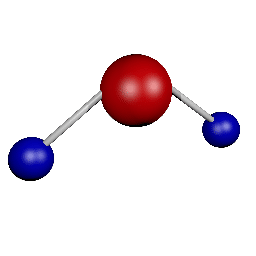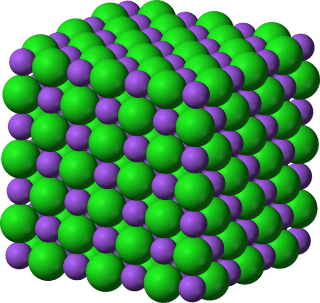Structure of Matter
Grade 8 Science Worksheets
Elements, Molecules, and Compounds
Elements are the most basic chemical substances. They cannot be broken down further by chemical means. An element is a pure substance consisting of atoms which have the same number of protons or atomic number. The Periodic Table arranges all known elements in the order of their Atomic Numbers.
Atoms of the same element may combine to form Molecules. For example, two oxygen atoms
combine to form an oxygen molecule. Atoms of two different elements may also combine to
form a molecule. For example, two atoms of hydrogen combine with one atom of oxygen to
form a molecule named water. A molecule is the smallest particle that retains all the properties of the substance from which it is obtained. Further division of the molecule will yield only atoms of individual elements.
Schedule a Free session to clear worksheet doubts
No credit card required, no obligation to purchase.
Just schedule a FREE Sessions to meet a tutor and get help on any topic you want!
When atoms of different elements combine in a fixed ratio, the result is nameda Compound. Water is thus a compound – it always has two atoms of hydrogen and one atom of oxygenin each molecule, no more no less. Each compound has its own unique properties, which are different from the properties of the individual elements from which it is made. Compounds may be solids, liquids, or gases.
Compounds hold their atoms together in many ways, such as –
- Covalent compounds like water and methane are held together by covalent bonds
- Ionic compounds like sodium chloride (table salt) and sodium fluoride (found in toothpaste) are held together by ionic bonds
- Metallic compounds like gold and aluminum are held together by metallic bonds
Compounds have an identifiable structure based on how their atoms are arranged. For example, carbon forms a range of Organic Compounds with hydrogen, such as Methane, Ethane, Propane, Butane, to name a few, each with its unique structure of atom arrangement. The diagrams show carbon atoms in green and hydrogen in grey.

All other compounds that lack Carbon-Hydrogen bonds are generally called Inorganic Compounds.

Water molecule with an oxygen atom (shown red) and two hydrogen atoms (shown blue)
Learn more about Structure of Matter and other important topics with 8th Grade Science Tutoring at eTutorWorld. Our expert science tutors break down the topics through interactive one-to-one sessions. We also offer the advantage of customized lesson plans, flexible schedules and convenience of learning from home.
eTutorWorld Understands Math Tutoring | Online Math Worksheets are Important Tools
Understanding graphs, charts, and opinion polls in a newspaper, for calculating house and car payments, and for choosing a long-distance telephone service are impossible without strong math skills …and the only way to develop strong math skills is by constant practice.
‘Practice makes a man perfect’ holds true for no other field better than for math. A middle or high school student must set aside a minimum of an hour for math every day. Other than textbooks, worksheets help you revise and understand concepts better.
Our expert tutors prepare online maths worksheets that are age and grade-appropriate. Grade-wise math worksheets for Elementary Math, Arithmetic, Pre-Algebra, Algebra, Geometry, Trigonometry, Statistics, Pre-Calculus and Calculus can be solved to improve math skills, to get ahead or to even catch up.
You may download these FREE online math worksheets in the PDF format, and then print and email us their solutions for a free evaluation and analysis by eTutorworld’smath expert tutors.
You may solve these worksheets by yourself or with your peers while studying together.
The Answer Key at the end of each worksheet allows for a self-evaluation.
Personalized Online Tutoring
eTutorWorld offers affordable one-on-one live tutoring over the web for Grades K-12, Test Prep help for Standardized tests like SCAT, CogAT, MAP, SSAT, SAT, ACT, ISEE and AP. You may schedule online tutoring lessons at your personal scheduled times, all with a Money-Back Guarantee. The first one-on-one online tutoring lesson is always FREE, no purchase obligation, no credit card required.
For answers/solutions to any question or to learn concepts, take a FREE CLASS.
No credit card required, no obligation to purchase.
Just book a free class to meet a tutor and get help on any topic you want!
Ions and Ionization
An atom or a group of atoms (a molecule) with an electric charge is called an Ion. Every atom has negatively charged electrons spinning around a heavy nucleus with positively charged protons. If the number of electrons and protons are equal, the atom is neutral. The chemical process of removing electrons from atoms or molecules to produce Positive Ions is called Ionization. These removed electrons may then join other atoms or groups of atoms to make them Negative Ions. The amount of charge that an ion has is determined by the number of electrons gained or lost by the atom or molecule.
Table salt, formed from sodium and chlorine, is an ionic compound. Each sodium atom loses an electron to become a positively charged sodium ion and each chlorine atom gains an electron to become a negatively charged chloride ion. (A negatively charged chlorine atom is called a Chloride). Table salt contains an equal number of positively charged sodium ions and negatively charged chloride ions.
An ion with a positive charge, as sodium in the example above, is called a Cation while an ion with a negative charge, as chloride in the example above, is called an Anion.

Sodium Chloridehas a fixed crystalline structure consisting of sodium cations (shown in purple) and chloride anions (shown in green).
Elements in the periodic table are grouped such as to identify atoms which will form cations or anions –
- Halogens such as Fluorine, Chlorine, and Iodine, always form anions
- Alkali metals such as Lithium, Sodium, Potassium, always form cations
- Alkali earth metals such as Barium, Calcium, Magnesium, always form cations
- Noble gases are generally unreactive and tend not to form ions
Most other metals such as Iron, Nickel, Silver, form cations, while most non-metals, such as Oxygen, Sulfur, Carbon, form anions.

Check Point
- Atoms of the same elements combine to form ______ while atoms of different elements combine to form ______.
- Organic Compounds are generally made up of ______ and ______.
- An atom with an electric charge is called _______.
- ______ is a negatively charged ion while ______ is a positively charged ion.
- In ionization process most metals lose electrons to form ______ while most non-metals gain electrons to form ______.
Answer Key
- Molecules, Compounds
- Carbon, Hydrogen
- Ion
- Anion, Cation
- Cations, Anions
Schedule a Free session to clear worksheet doubts
No credit card required, no obligation to purchase.
Just schedule a FREE Sessions to meet a tutor and get help on any topic you want!
Pricing for Online Tutoring
| Tutoring Package | Validity | Grade (1-12), College |
|---|---|---|
| 5 sessions | 1 Month | $139 |
| 1 session | 1 Month | $28 |
| 10 sessions | 3 months | $269 |
| 15 sessions | 3 months | $399 |
| 20 sessions | 4 months | $499 |
| 50 sessions | 6 months | $1189 |
| 100 sessions | 12 months | $2249 |
8th Grade Free Worksheets
- The Universe
- Heredity
- Evolutionary Theory
- Structure of the atom
- Ethical Practices
- Unveiling the mystery behind the physical universe
- Components of the universe
- Celestial phenomena
- The tilt of Earth’s axis
- The causes of high and low tides
- Earth Systems
- Rocks and Fossils
- Weather and Climate
- Basics of chemical reactions
- Types of Chemical reactions – Endothermic, exothermic, oxidation, reduction reactions
- Catalysts and enzymes
- Compounds and mixtures
- Acids, Bases and pH Indicators
Images Credit:
http://www.nyu.edu
https://storage.needpix.com/rsynced_images/h2o-580992_1280.png
https://upload.wikimedia.org/wikipedia/commons/thumb/e/e9/Sodium-chloride-3D-ionic.png/948px-Sodium-chloride-3D-ionic.png
IN THE NEWS

Our mission is to provide high quality online tutoring services, using state of the art Internet technology, to school students worldwide.
Online test prep and practice
SCAT
SSAT
ISEE
PSAT
SAT
ACT
AP Exam
Science Tutoring
Physics Tutoring
Chemistry Tutoring
Biology Tutoring
Math Tutoring
Pre-Algebra Tutoring
Algebra Tutoring
Pre Calculus Tutoring
Calculus Tutoring
Geometry Tutoring
Trigonometry Tutoring
Statistics Tutoring
Quick links
Free Worksheets
Fact sheet
Sales Partner Opportunities
Parents
Passive Fundraising
Virtual Fundraising
Our Expert Tutors
Safe and Secure Tutoring
Interactive Online Tutoring
After School Tutoring
Elementary School Tutoring
Middle School Tutoring
High School Tutoring
Home Work Help
Math Tutors New York City
Press
©2022 eTutorWorld Terms of use Privacy Policy Site by Little Red Bird
©2022 eTutorWorld
Terms of use
Privacy Policy
Site by Little Red Bird






